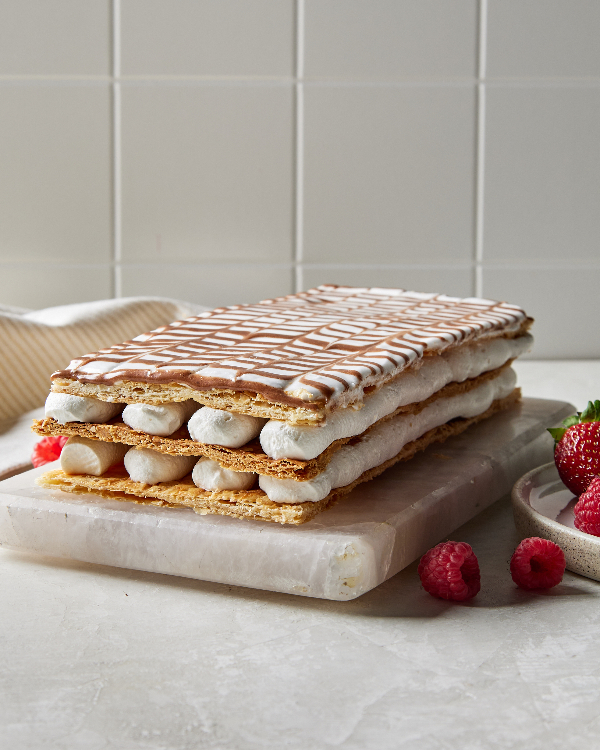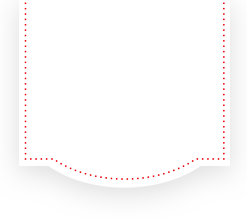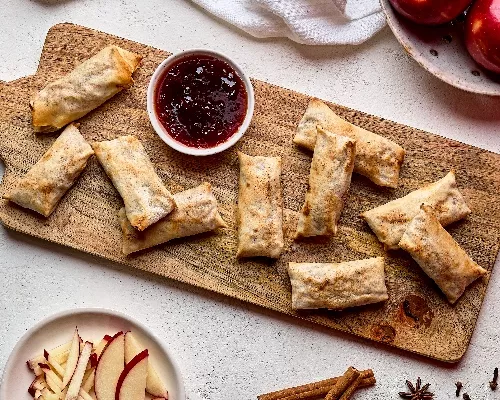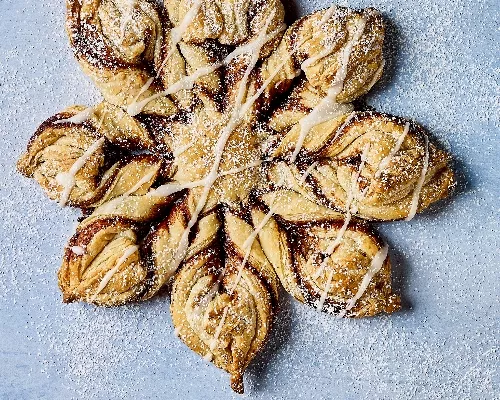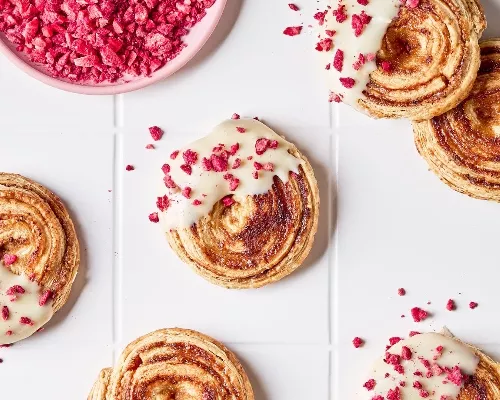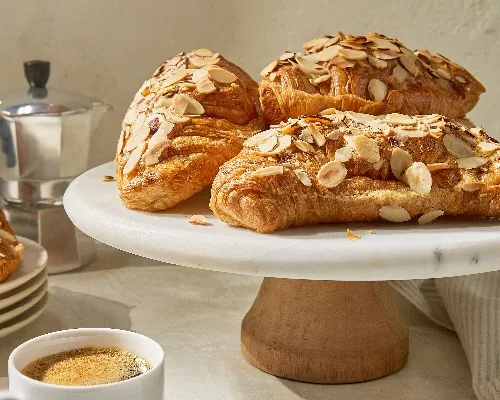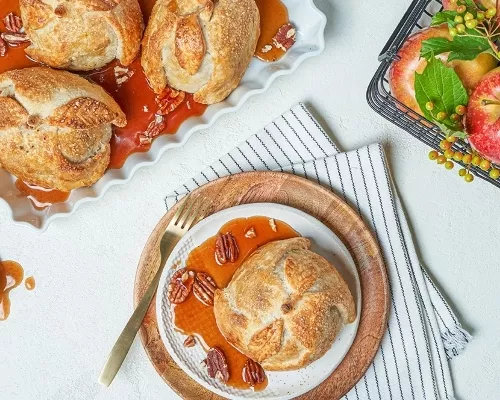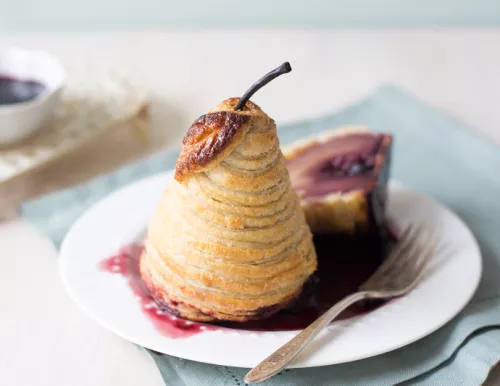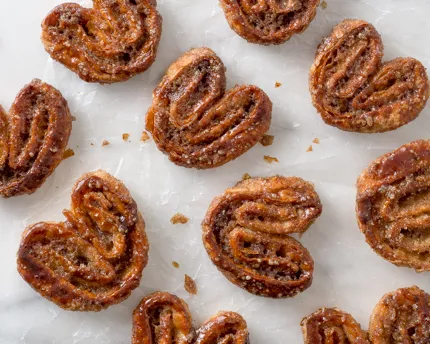Step 1
Cut butter into small cubes. Set aside ¼ cup (57 g) of butter and place the remainder into the freezer until almost frozen; about 15 minutes. Measure out 1 cup (240 ml) of water, and place into fridge while butter is in the freezer.
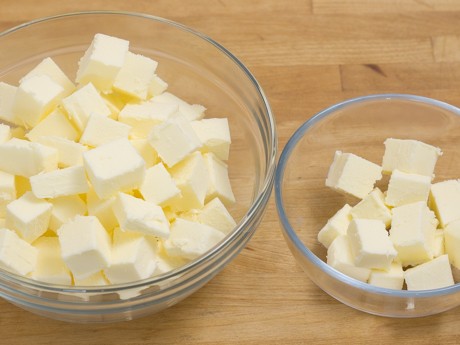
Step 2
In the bowl of a food processor fitted with a metal blade, blend together flour, Redpath® Granulated Sugar, and salt. Add the ¼ cup (57 g) of butter and pulse until butter coats the flour mixture and is no longer visible.
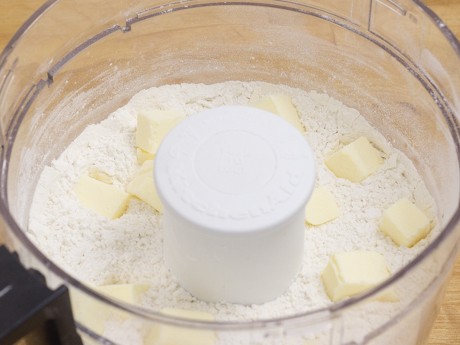
Step 3
Add the chilled butter. Pulse 3 or 4 times; there should be varying sizes of butter remaining. Drizzle in half of the cold water, pulse 2 times. Add the remainder of the water, and pulse 2 times more times.
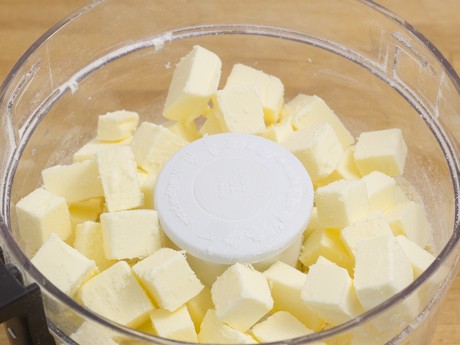
Step 4
Lay the flour mixture onto a piece of parchment paper. Working quickly, bring dough together with hands. Roughly form into a large “log”. Pat the “log” down and form into a rectangle. With the shorter end facing the edge of the work surface, place a second sheet of parchment paper over the dough.
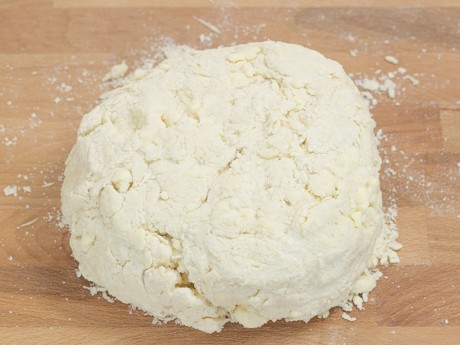
Step 5
With a rolling pin, gently press down dough. Move the rolling pin from the dough’s edge farthest away from the work surface’s edge and place it next to the indentation made. Move and press the rolling pin until it reaches dough closest to the work surface. Peel the top parchment off the surface of the dough to ensure dough is not sticking. If the dough is sticking, lightly flour the areas of the dough that are sticking. Place the parchment back onto the dough and roll out to a 16 x 20 inches (40 x 50 centimetres) rectangle.
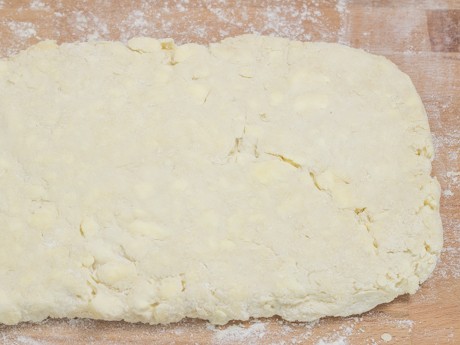
Step 6
Gently peel off the parchment paper. The long edge should be parallel to the edge of the work surface. Fold the dough into thirds; fold the top edge (furthest away from the edge of the work surface) a third of the way down, and fold the bottom edge up (and over the first fold). The rectangle should now be approximately 4 x 20 inches (10 x 50 centimetres).
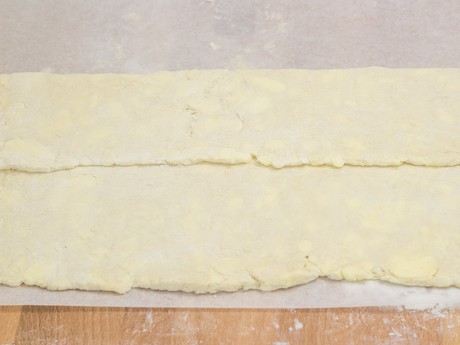
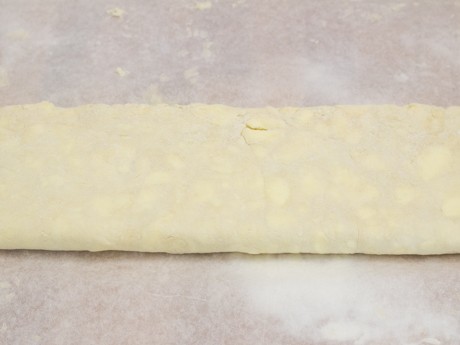
Step 7
Working quickly, roll up the dough (like a pinwheel) from one of the shorter sides (4 inches – 10 centimetre) and ensure that the short edge is under the dough. Gently press the dough down to form a square. With the rolling pin and with a little pressure, roll the surface of the dough to even it all out. Wrap the square of puff pastry with plastic wrap, and allow the dough to rest in the fridge for at least an hour before using.
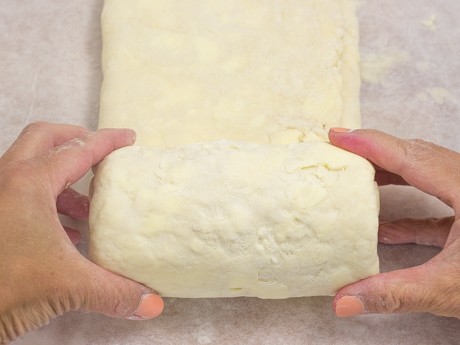
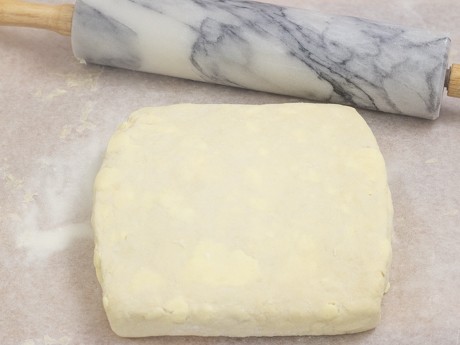
Step 1
In a medium-sized pot over medium heat, stir the milk, cream, ¼ cup (50 g) Redpath® Granulated Sugar, and vanilla bean (seeds scraped, pod included) together until it starts to simmer and the sugar is dissolved. Turn off heat and cover pot with plastic wrap, allow the mixture to infuse; about 5 minutes.
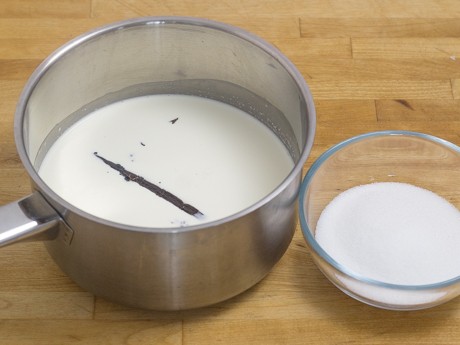
Step 2
Once milk has infused, in a medium-sized bowl, whisk together yolks, remaining sugar, and cornstarch until well combined.
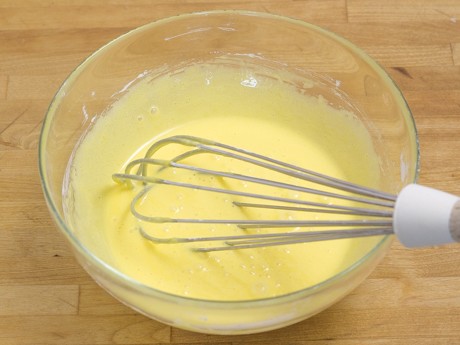
Step 3
Temper yolks by ladling a small amount of the hot milk into the eggs while continuously whisking. Repeat the process until the temperature of the eggs feels about the same as the temperature of the milk. Pour and whisk the remaining milk into the egg mixture. Strain the milk mixture back into the pot.
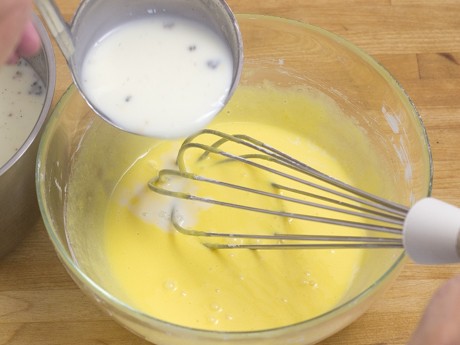
Step 4
Place pot over medium heat, constantly stirring with a rubber spatula. Once mixture starts to thicken, switch to a whisk, and lower temperature slightly. Whisk constantly until mixture begins to bubble; cook for a minute and a half.
Step 5
Take off heat and whisk until smooth. Add butter. Whisk until butter is fully incorporated into the pastry cream. Transfer pastry cream into a clean bowl or shallow dish. Place a piece of plastic wrap directly over the surface of the cream. Ensure the entire surface is touching the wrap as the pastry cream will form a skin in the areas that it does not. Allow to chill in the fridge until cold; at least one hour.
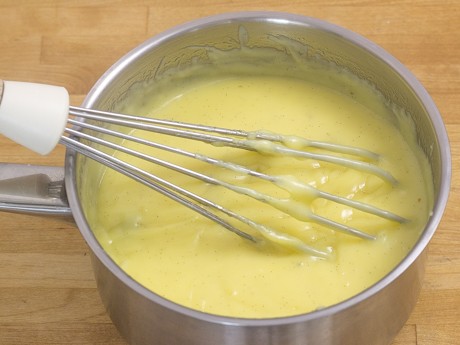
Step 6
Meanwhile in a medium-sized bowl, whip the heavy cream until stiff peaks form. Whisk the cold pastry cream until softened and smooth. Fold one third of the whipped cream into the cold pastry cream to lighten. Fold in the remainder of the whipped cream. Chill until ready to assemble cake.
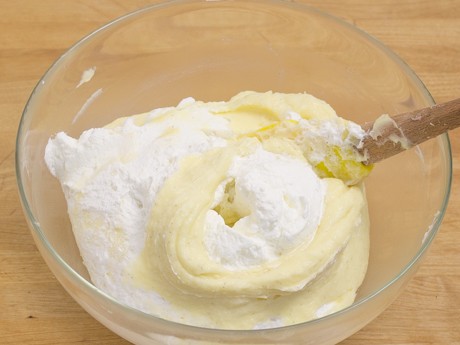
Step 1
Once the puff pastry has rested in the fridge, it is ready to be used. Preheat oven to 425°F (220°C). Line a half sheet baking pan with parchment paper. On a piece of parchment, roll the dough into a large rectangle that will fit the prepared baking sheet. Allow the dough to rest for 10 minutes before transferring it to the baking sheet. If the dough has shrunk while resting, gently re-roll the dough to size. Fold the rectangle into quarters. Place the tip of the corner into the centre of the baking sheet and unfold. Using a fork, dock the entire surface of the puff pastry.
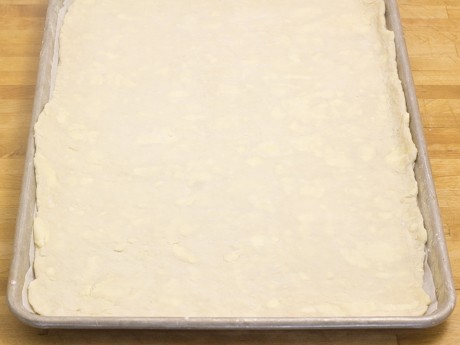
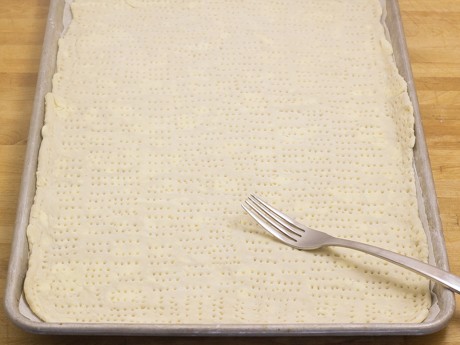
Step 2
Cover puff pastry with a sheet of parchment and place into the fridge to chill for about 25 minutes. Meanwhile, prepare the egg wash.
Step 3
In a small bowl, whisk together an egg with water. Set aside until ready to use.
Step 4
Once chilled, lightly brush puff pastry with egg wash. Place a second sheet of parchment (lightly buttered) on top of the pastry and place another baking sheet on top to weigh it down.
Step 5
Place the weighed down puff pastry into the preheated oven and bake for 15 to 18 minutes. Check to see if pastry is browning. If not, replace the parchment and baking sheet on the puff pastry and bake for another 5 minutes. Once pastry begins to change colour, pull out the baking sheet and carefully remove the top baking sheet and top parchment paper. Lower heat to 400°F (200°C), and finish baking puff until crisp and deep golden brown; about 5 minutes. Remove from oven and allow to cool completely on the pan before handling and cutting.
Step 6
With a ruler and a sharp serrated knife, slice edges of puff pastry until even. Measure the longest edge of the pastry and divide by three. Cut the cooled puff pastry into thirds. A template may be used to ensure accuracy. Choose the most level piece of puff pastry to be the top layer.

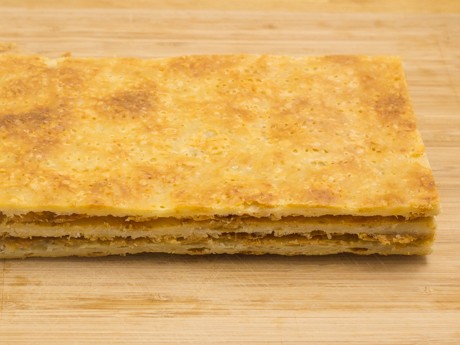
Step 1
In a small bowl, whisk together Redpath® Icing Sugar and salt. Whisk in corn syrup and add milk by the teaspoonful, until the desired consistency is achieved.
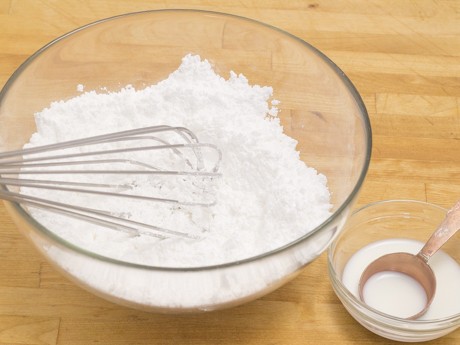
Step 2
In a small bowl transfer 3 tablespoons (45 ml) of the prepared icing. Stir in the cocoa powder. If needed, add a teaspoon of milk. Transfer chocolate icing into a paper cone or piping bag. Set aside.
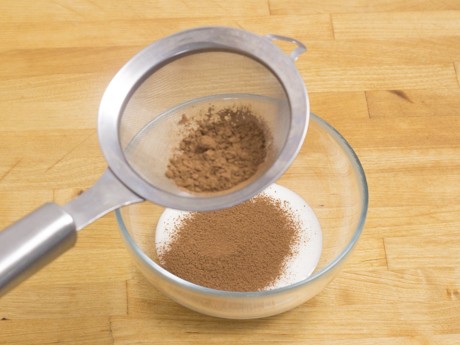
Step 3
Place the top puff pastry layer onto a wire rack over a parchment lined baking sheet. Pour the icing onto the puff pastry. Using an offset spatula, quickly spread icing evenly over the entire surface. Cut the tip off of the piping bag and quickly pipe chocolate lines, widthwise across the icing. With a skewer or the tip of a sharp paring knife, gently drag the tip through the chocolate lines creating a “V” as it passes. Drag the tip in the opposite direction. Alternate the drag direction until the entire surface is covered. Allow the icing to slightly dry before proceeding.
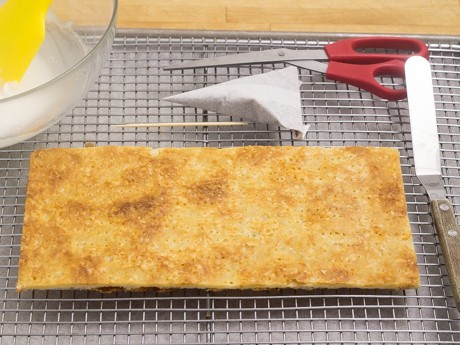
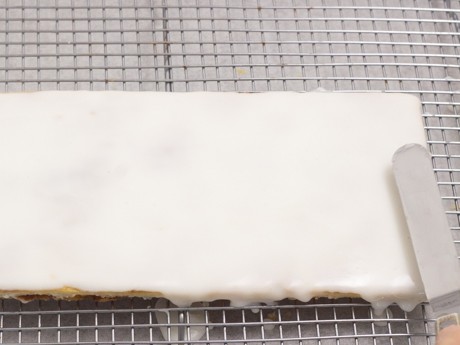
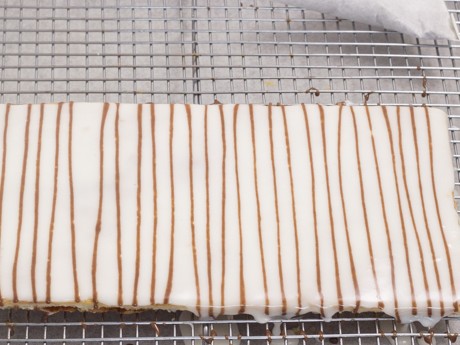
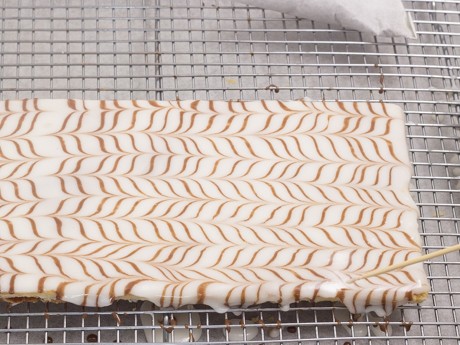
Step 1
Remove chilled pastry cream from the fridge. Place half of the pastry cream into a piping bag fitted with a large round tip. Pipe the pastry cream onto one of the puff pastry rectangles. Place second layer of puff pastry on top and lightly press layer onto the pastry cream. Transfer the remaining pastry cream into the piping bag and repeat the process with the second layer.
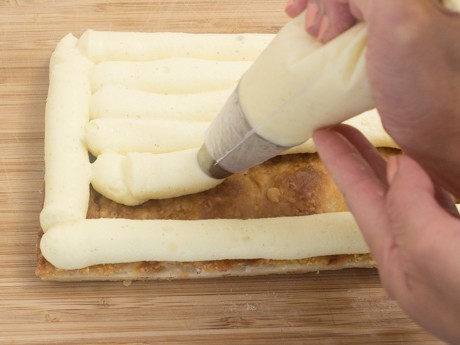
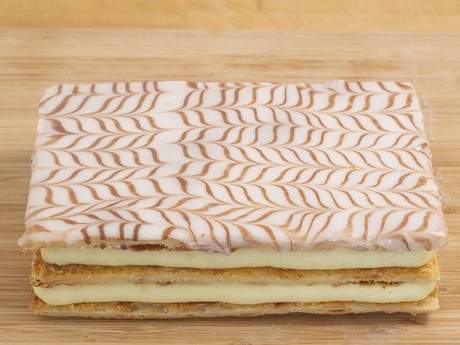
Step 2
Carefully place the iced puff pastry sheet on top of the pastry cream. Transfer cake to a serving platter; place platter into the freezer for about 30 minutes to harden before slicing and serving.
